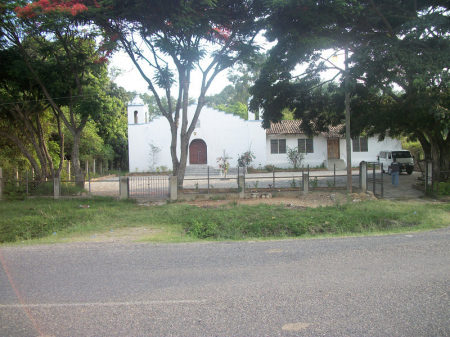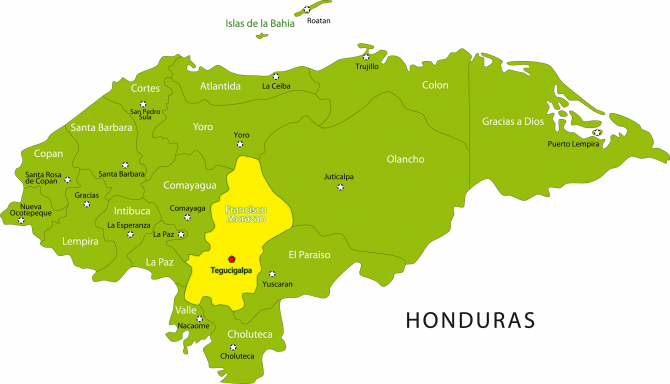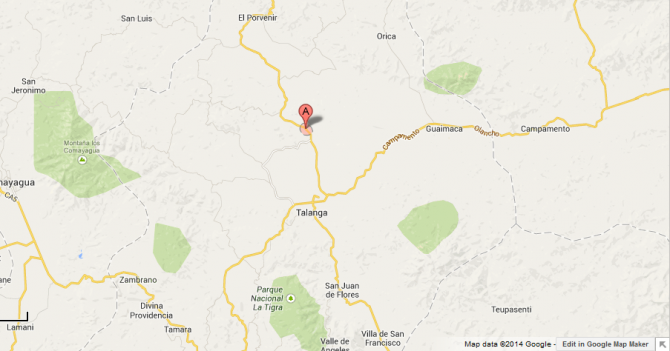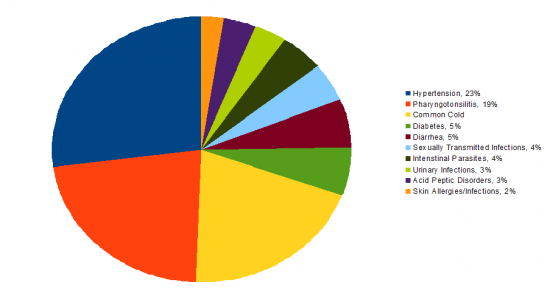El Guante, Honduras
![]()
![]()
![]()
![]()
![]()
![]()
![]() Click on Programs to learn more about their work in this community
Click on Programs to learn more about their work in this community
General Information

| Population* | 1080 |
| Number of homes | 380 |
| Avg # of people per home | 2.8 |
| Number and % of children |
(0-5): 200/18.5% (0-9): 377/34.9% |
| Primary Occupations |
Agriculture, Factory work, other services |
| Water System |
Yes - well and pump |
| Communty Bank | No |
| % of Houses with Latrines | N/A |
| Electricity | Yes |
| Corresponding Health Center and Distance | CESAMO - El Guante - 5 minutes walking |
| Common Illnesses | Hypertension, respiratory infections |
| School Access & Distance | kinder-9th grade in the community, 5 minutes walking |
| Municipality | Cedros |
| Department | Francisco Morazán |
| Corresponding Health Center |
N 14° 33.116’ W 086° 05.690’ |
| Distance from compounds | 2 hours |
* Population does not reflect how many patients will be seen on medical
brigades as many people from surrounding communities come seeking
Medical Brigades medical attention.
Top Three Needs Expressed
The top three needs expressed by the key community members are better quality and quantity of water, a larger school, and more work opportunities.


El Guante is one of larger communities, located near the municipality of Cedros. It is fairly urban compared to most of our other communities, located off of a major highway.
El Guante’s educational system includes Kinder, Primary, and Middle schools (until 9th grade). There are about 400 students and the school director is Luz Araceli Suarez Alvarez. It is estimated that about 98% of the community knows how to read and write.
El Guante has a water system built by the government in 1980s, and is currently in the process of remodeling with the local municipality. The main problem with the water system is that the tubing is poor quality and water only arrives once a week. The system is sourced by a well and the water is not regularly chlorinated. About 98% of the community is connected to the water system. There is a Water Council with 2 active members, led by Rigoberto Hernandez and Karla Patricia Valercia.
El Guante has a health center in the community that provides general medicine and dentistry. Dr. Max Martinez is the head physician and Luz Marina is the main dentist. There is a Community Health Committee that works in conjunction with the health center.
According to GB interviews, the most common illness seen by community members is respiratory illnesses. It is estimated about 75-100% of the community have latrines that currently function. 0-10% has eco-stoves (estufa justa). About 95% is estimated to have concrete floors.
Below are some available health center statistics from the CESAMO-El Guante2:
I. Annual Morbitities, 2009: CESAMO-El Guante, Cedros

Centro de Salud Statistics, Centro de Salud Regional-Francisco Morazán, 16 Marzo 2010
The average family income per month is estimated to be about 2000 Lempiras, which is approximately L400 (US $21.18) per person or less2. The majority of homes are made of adobe. The main form of employment in El Guante is agriculture on owned land, and the main crops that are cultivated are corn and beans. There is also temporal work available at the wood cutting factory. El Guante used to have a communal bank, but it no longer exists. Commercial banks are accessible in Talanga.
El Guante is located on the side of the highway, allowing members of the community to have access to transportation and other places of work.
El Guante is not currently receiving medical brigades from any organizations outside of Global Brigades. The local municipality is currently working on an improved water system, led by the new mayor David Castro who is from El Guante.
Check back soon for more pictures of El Guante!
Source of information: Key informant interview, Centro de Salud statistics
Date of interview: 23 February 2010
1CESAMO and CESAR are terms used for types of health centers. CESAMOs are larger, more comprehensive facilities that usually have a physician on staff at all times and occasionally a dentist. CESARs are more remote, less equipped facilities, usually with
1-2 nurses on staff.
2According to Red Solidaria and World Food Programme in Honduras, the average family is approximated at 5 people per household, the poverty line is L930 (US$49.23) per person per month, and the extreme poverty line is L617 (US$32.66) per person per month.